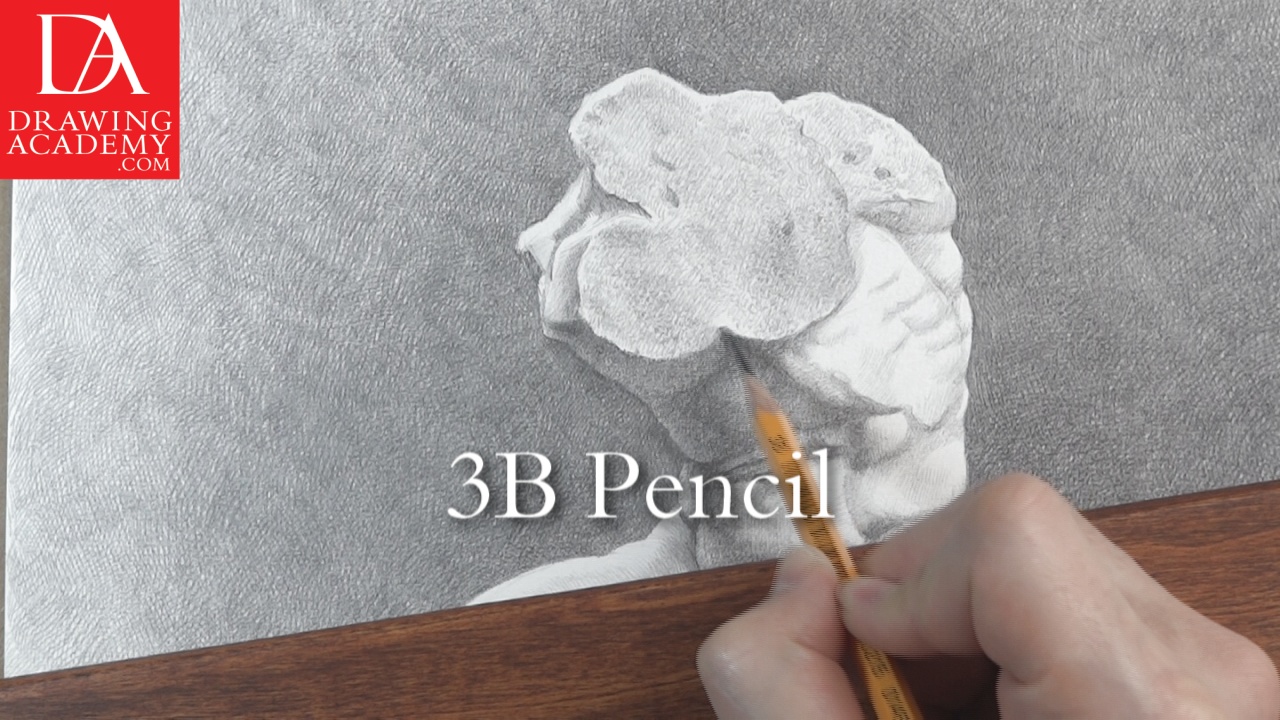Discover How to Draw a Male
In this Video Lesson you will discover How to Draw a Male on example of the Classical Belvedere Torso drawing.
Enroll in the Drawing Academy Course
Pay once - Enjoy forever!
Only $297
How to Draw a Male – Classical traditions of torso drawing
This Belvedere figure was traditionally identified as the hero, Heracles, although there are other opinions that this figure can represent cyclope Polyphemus or satyr Marsyas, among other possible Greek mythical personalities.

The figure is sitting on an animal skin, which is disputed to be either a lion or panther. This used to be the full sculpture; the limbs and head are long gone. Specialists believe that it is a copy made in the 1st century BC after a much older original, dated back to the 2nd century BC. The name, “Apollonios son of Nestor”, which is carved on the base, is believed to belong to an Athenian sculptor, although this name is not mentioned in ancient literature.
The first time the Belvedere Torso was mentioned was in the 1430s, when the collection of Cardinal Prospero Colonna in Monte Cavallo was documented. Later references to this sculpture include numerous drawings of this torso made by Renaissance artists during the 15th century.
Ever since this sculpture was discovered, the Belvedere Torso has been an inspiration for fine artists and sculptors; they learn not only How to Draw a Male on example of this sculpture, but also the classical ideal of the perfect human body proportions and a realistic approach to portraying a male body.
The masculine torso was highly influential on late Renaissance art. This influence continued further on to the periods of Mannerism and Baroque. Fine artists of that time were fascinated with this classical marble and wanted to learn How to Draw a Male realistically.
Artists such as, Michelangelo and Raphael, took this inspiration to another level by using it in their art as a classical ideal of the perfect male body.
There is a legend that Michelangelo was asked by Pope Julius II to complete the statue with limbs and a head. Although the artist respectfully declined the Pope’s request on the grounds that the statue was too beautiful to be amended, he used it as the inspiration for the majority of the figures on the ceiling of the Sistine Chapel. The classical canons of this sculpture can be found in many figures on Michelangelo’s fresco, including images of Sibyls and Prophets.
The Belvedere Torso is still admired to this day and hundreds of people have the privilege to see this sculpture in the Vatican museum. When it comes to the subject of How to Draw a Male, a fine artist can always take an inspiration in such classical sculptures as the Belvedere Torso.
How to Draw a Male – Pencil strokes gamut
When considering How to Draw a Male, keep in mind that the wide gamut of pencil strokes makes the artwork more interesting to look at. Strokes gamut includes such attributes of pencil marks as: direction and patterns of strokes, their length, boldness, and rhythm. Individual pencil strokes are visible even on very dark shades.
Going through the “How to Draw a Male” process, the shading is carried on in short and accurate pencil strokes. The pencil is lifted off the paper surface at the end of each stroke. This traditional method of hatching helps to keep the drawing looking fresh and alive.
How to Draw a Male – Avoid amateurish methods
There are some so-called art tutors, who advocate a different shading approach when it comes to the How to Draw a Male topic. They say that its OK to start from…let’s say, the top-left corner of the drawing and render tonal values to the desired depth straight away in one attempt – while leaving other areas of the drawing un-touched. Then you will move on and render the next few centimetres of the drawing to its full tonal finish before moving further down while working on a task of ‘How to Draw a Male’.
I can only presume that such tutors have no formal art education and have never studied classical drawing in a strong, traditional, fine art school. Their drawing approach has no correlation with the proper rules of classical drawing. Their experience comes from self-taught copying of photographs and somebody else’s artworks. This is not a fine art; it is a photocopying equipment imitation. While the end result may look cute to the amateur eye, such individuals will have a great challenge when it comes to drawing from memory, imagination or nature.
That is why drawing skills must be developed in a way that frees the creative abilities of an artist when he or she works on a task of “How to Draw a Male”. When an art student learns the proper foundation of drawing, he or she will have the skills to portray any object or model with confidence and precision. It doesn’t matter that the student has never before done a drawing of…let’s say, this torso. The drawing principles of drawing this torso will be exactly the same as for drawing any other three-dimensional object for that reason.
Keep practising the subject of “How to Draw a Male” and draw classical figures to train your hand and eye, as well as, to help strengthen your understanding of classical ideals. Great results will follow.




